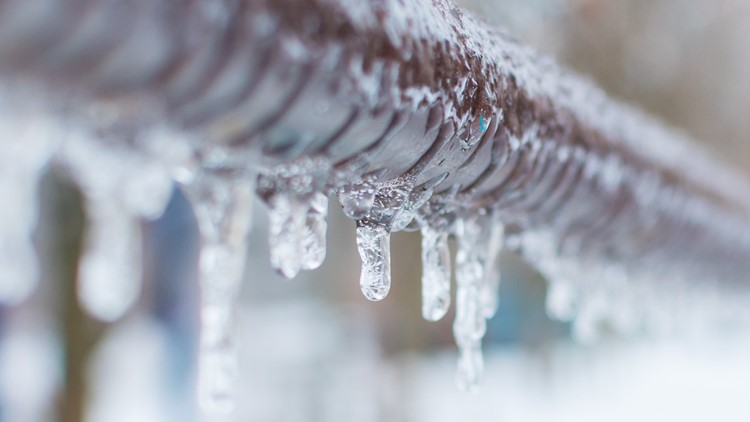Advice for Preventing Frozen Plumbing in Cold Weather: Expert Tips
Advice for Preventing Frozen Plumbing in Cold Weather: Expert Tips
Blog Article
What are your opinions regarding Winter Plumbing Precautions: Preventing Frozen Pipes?

Cold weather can damage your plumbing, especially by freezing pipes. Right here's how to stop it from taking place and what to do if it does.
Introduction
As temperatures drop, the danger of frozen pipes rises, possibly causing pricey repairs and water damage. Recognizing exactly how to prevent icy pipelines is essential for homeowners in chilly climates.
Comprehending Icy Pipes
What creates pipelines to ice up?
Pipes ice up when revealed to temperature levels listed below 32 ° F (0 ° C) for extended periods. As water inside the pipelines freezes, it expands, putting pressure on the pipe walls and possibly creating them to burst.
Dangers and problems
Frozen pipelines can bring about supply of water disruptions, home damages, and expensive repairs. Ruptured pipes can flood homes and trigger substantial structural damages.
Signs of Frozen Pipes
Determining frozen pipelines early can prevent them from rupturing.
How to determine frozen pipelines
Try to find reduced water flow from faucets, uncommon smells or noises from pipelines, and visible frost on revealed pipelines.
Prevention Tips
Protecting prone pipes
Cover pipelines in insulation sleeves or make use of heat tape to secure them from freezing temperature levels. Focus on pipelines in unheated or external locations of the home.
Home heating techniques
Maintain interior rooms appropriately warmed, especially locations with pipes. Open up cabinet doors to allow cozy air to distribute around pipes under sinks.
Protecting Exterior Plumbing
Garden pipes and outside taps
Disconnect and drain yard pipes prior to winter months. Set up frost-proof faucets or cover outside taps with shielded caps.
What to Do If Your Pipes Freeze
Immediate activities to take
If you think frozen pipes, maintain faucets open up to ease stress as the ice melts. Use a hairdryer or towels soaked in warm water to thaw pipelines gradually.
Long-Term Solutions
Structural adjustments
Take into consideration rerouting pipes away from outside wall surfaces or unheated areas. Add added insulation to attic rooms, cellars, and crawl spaces.
Updating insulation
Buy top notch insulation for pipelines, attic rooms, and wall surfaces. Correct insulation aids keep consistent temperature levels and reduces the danger of icy pipelines.
Verdict
Preventing icy pipelines requires proactive steps and quick feedbacks. By recognizing the causes, indicators, and preventive measures, homeowners can safeguard their plumbing throughout winter.
5 Ways to Prevent Frozen Pipes
Drain Outdoor Faucets and Disconnect Hoses
First, close the shut-off valve that controls the flow of water in the pipe to your outdoor faucet. Then, head outside to disconnect and drain your hose and open the outdoor faucet to allow the water to completely drain out of the line. Turn off the faucet when done. Finally, head back to the shut-off valve and drain the remaining water inside the pipe into a bucket or container. Additionally, if you have a home irrigation system, you should consider hiring an expert to clear the system of water each year.
Insulate Pipes
One of the best and most cost-effective methods for preventing frozen water pipes is to wrap your pipes with insulation. This is especially important for areas in your home that aren’t exposed to heat, such as an attic. We suggest using foam sleeves, which can typically be found at your local hardware store.
Keep Heat Running at 65
Your pipes are located inside your walls, and the temperature there is much colder than the rest of the house. To prevent your pipes from freezing, The Insurance Information Institute suggests that you keep your home heated to at least 65 degrees, even when traveling. You may want to invest in smart devices that can keep an eye on the temperature in your home while you’re away.
Leave Water Dripping
Moving water — even a small trickle — can prevent ice from forming inside your pipes. When freezing temps are imminent, start a drip of water from all faucets that serve exposed pipes. Leaving a few faucets running will also help relieve pressure inside the pipes and help prevent a rupture if the water inside freezes.
Open Cupboard Doors
Warm your kitchen and bathroom pipes by opening cupboards and vanities. You should also leave your interior doors ajar to help warm air circulate evenly throughout your home.

I found that content on How To Avoid Freezing Pipes while perusing the web. So long as you enjoyed our blog posting please remember to pass it around. Thank you for your time. Return soon.
Click Here Report this page